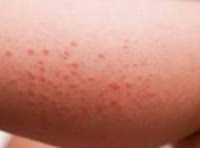Dizziness makes one lightheaded or lose his balance under normal circumstances. One may also feel that the world around him is spinning and thus suffer from vertigo. Usually, dizziness is a state of unsteadiness, whirling sensation, feeling of movement within head like giddiness etc. Dizziness can make a person lose the control over him and raise the risk of a fall.
There are three types of dizziness namely:
There are three types of dizziness namely:
• Vertigo: It’s the state where it feels like the world around us is spinning or moving. The person may feel that everything around him is moving when actually it’s not. This is usually due to problem in the ear but sometimes may even be because of vision problem. Patients who suffer from this find it difficult to move around as it affects the balance and may lead to a fall. Vertigo is considered severe than dizziness, symptoms of which include loss of balance, blurred vision, problem walking properly, nausea, the feeling that everything around is moving or spinning, earache etc.
• Disequilibrium: It is a state of lack of balance or stability. Person suffering from disequilibrium may find it difficult to keep balance while walking like staggering or veering or falling problem. Disequilibrium is caused due to orthopedic difficulty, weakness or it could just be dis-use of disequilibrium as the person becomes lethargic and doesn’t walk, exercise or simply put do not practice the skill of keeping a balance often
• Lightheadedness or faintness: To faint is sudden and unexpected loss of consciousness. Sometimes it may be due to certain psychological factors or at times there may not be any serious problem at all. The symptoms include, feeling dizzy, hot and seeing spots. Usually, it’s recommended that the person should lie down on the floor with his legs slightly elevated as a preventive measure
• Disequilibrium: It is a state of lack of balance or stability. Person suffering from disequilibrium may find it difficult to keep balance while walking like staggering or veering or falling problem. Disequilibrium is caused due to orthopedic difficulty, weakness or it could just be dis-use of disequilibrium as the person becomes lethargic and doesn’t walk, exercise or simply put do not practice the skill of keeping a balance often
• Lightheadedness or faintness: To faint is sudden and unexpected loss of consciousness. Sometimes it may be due to certain psychological factors or at times there may not be any serious problem at all. The symptoms include, feeling dizzy, hot and seeing spots. Usually, it’s recommended that the person should lie down on the floor with his legs slightly elevated as a preventive measure
Sometimes dehydration, some head injury, motion sickness etc. may also cause of dizziness or vertigo. It’s important to know the underlying problem behind the discomfort that the person is having and go for medication accordingly



















